Water Water Everywhere, and Every Drop For Sale: The Global Water Trade
From bottled water to the flow of H2O in countless products and industrial processes, the global water trade is the ultimate "Zero Sum Game" as all life on the planet participates in the search for water. This month we uncover the economic, environmental, and geopolitical implications of the commodity that no part of the global economy can do without.
A Note Of Urgency
From bottled water to the flow of H2O in countless products and industrial processes, the global water trade is the ultimate "Zero Sum Game" as all life on the planet participates in the search for water. This month we uncover the economic, environmental, and geopolitical implications of the commodity that no part of the global economy can do without.
The Rise of Water Trade
The water trade has ancient roots, intertwined with both religion and commerce. The Church once leveraged the trade of Holy Water, signifying its influence. By the 1660s, Britain began commercializing bottled spring water. However, the modern bottled water industry, as we recognize it, truly began its ascent in the latter half of the 20th century. From a modest industry in the 1970s, sales surged to $1.17 billion by 1995. By 2021, this figure reached $4.27 billion, marking the industry's rapid growth over just a few decades.
Here you can see a world grappling with water scarcity. Regions endowed with abundant water have become powerbrokers for parched areas across the globe. The burgeoning water market reflects a complex network of agreements, policies, and economic interests driven by necessity and survival.
"Number One Ingredient": The Hidden Flow of H2O
Virtual water refers to the volume of water used to produce a product, from its inception to its completion. It's the hidden flow of water embedded in traded goods. From the vast wheat fields of agribusiness to the water-intensive cotton plants supporting the textile industry, every product has its own water footprint. This footprint measures both the water used and polluted during production. Soy, for instance, demands more water than wheat globally, and beef's high consumption largely stems from its feed. This industrial water consumption rate varies not just by product but also by geography. For example, while China's efficient rice strains conserve water, Africa's arid conditions amplify the water needs for crops like rice and maize. To shed more light on this, we've compiled estimates of the average virtual water content in various products.
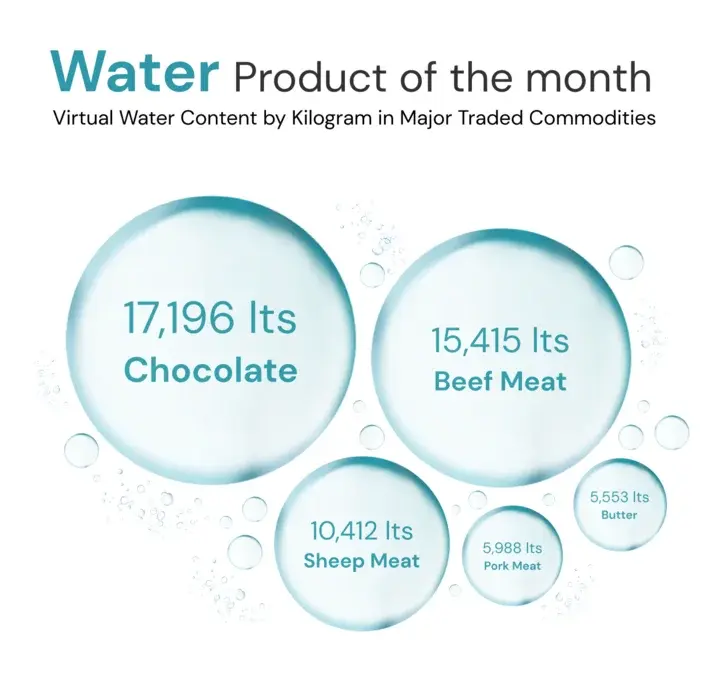
Just as humans are mostly water, global trade must be irrigated with a constant supply of it.
The relationship between water and trade has grown so close the words might soon be nearly interchangeable. When countries export food, they essentially ship the water.
According to our calculations using 2022 trade data, poultry farms in Brazil and the United States use over 20 and 16 billion liters of water, respectively, to give the world its hot wings, fried nuggets and Sunday roasted poulets. Similarly, in New Zealand and Australia, sheep graze contentedly on grass and silage washed down with 6.68 and 4.82 billion liters of water. In Spain, Germany, and Poland, every slab of pork is dripping invisibly with some of the up to 13.21, 10, and 6.28 billion liters of water it takes to bring all those pigs to market.
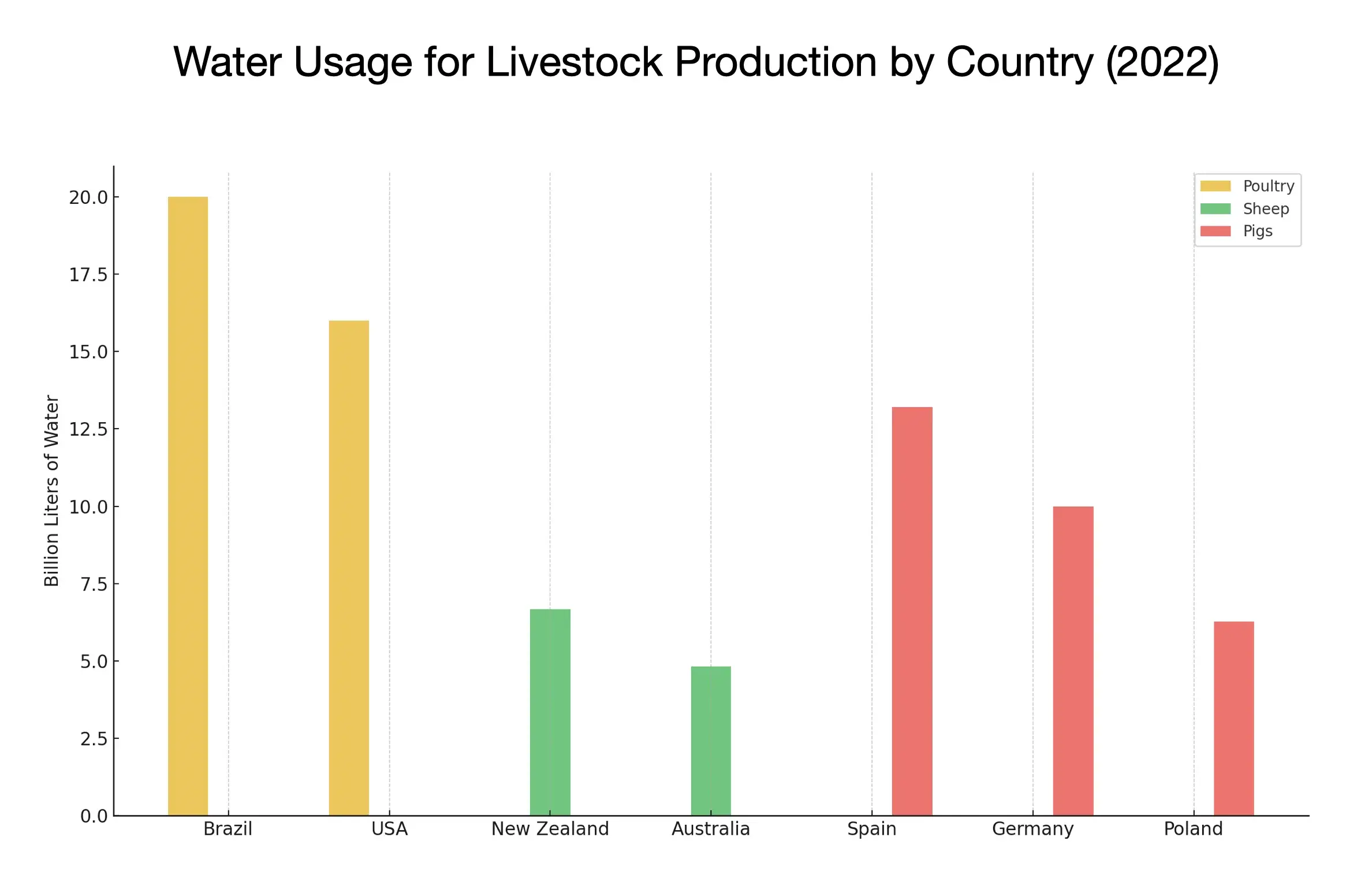
Behind the Flow: The World's Virtual Water Trade
The United States leads as the top exporter, channeling massive water resources through its goods. On the flip side, Sri Lanka emerges as the dominant importer, relying heavily on external water sources.
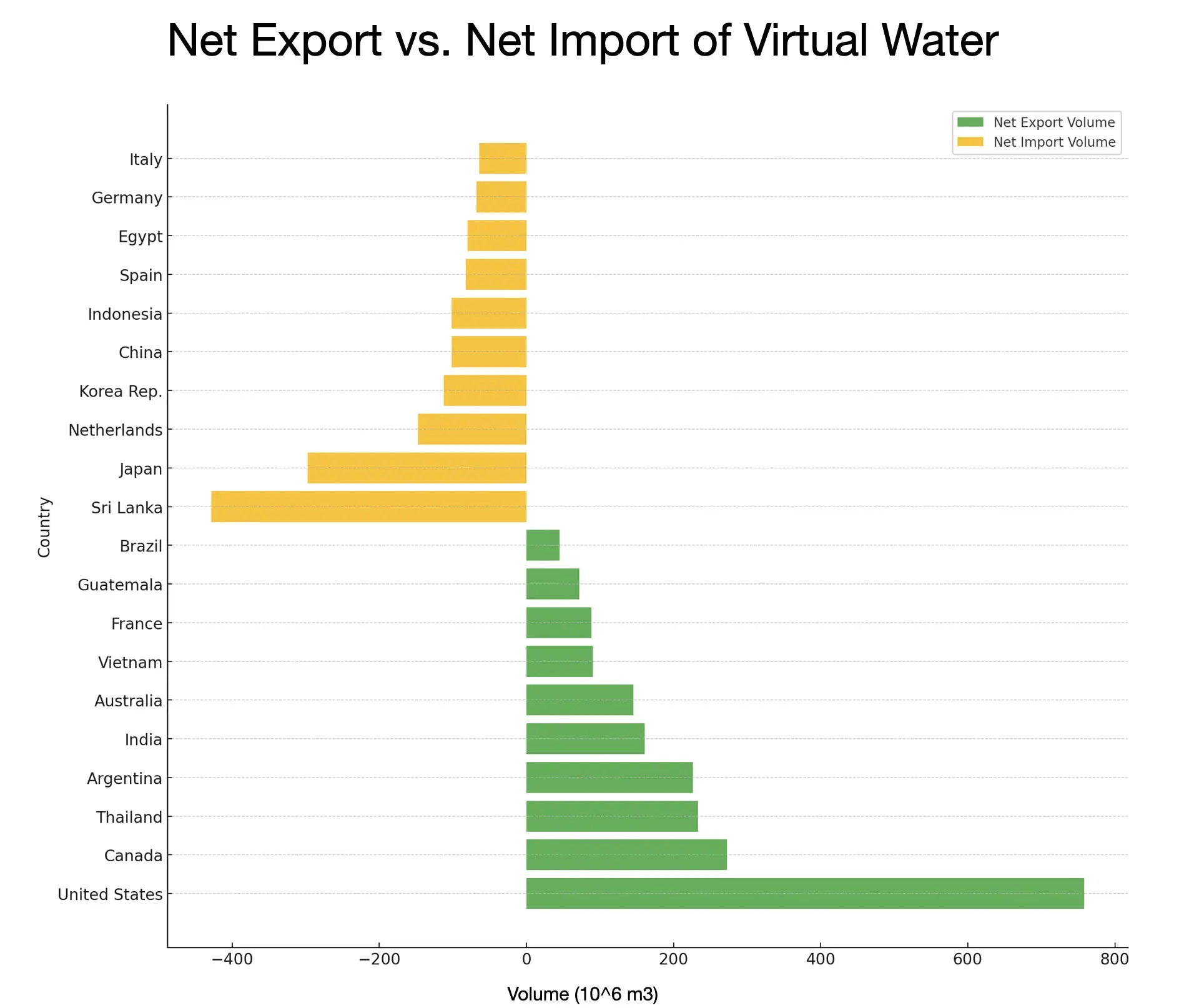
California produces over 80% of the world's almonds within the United States, a crop that requires about 1.1 gallons of water for each nut. Despite severe droughts affecting over 30% of the state, California continues to export high value almonds, commiting vast amounts of its precious water in the form of nuts, almond milk and almond based food products. This grim paradox of maximizing the economic gains of high-value exports while aquifers and reservoirs sink to historic minimums is becoming the "devils bargain" in global trade. As water becomes scarce California's intricate dance of economics and sustainability is closely watched by the whole world.
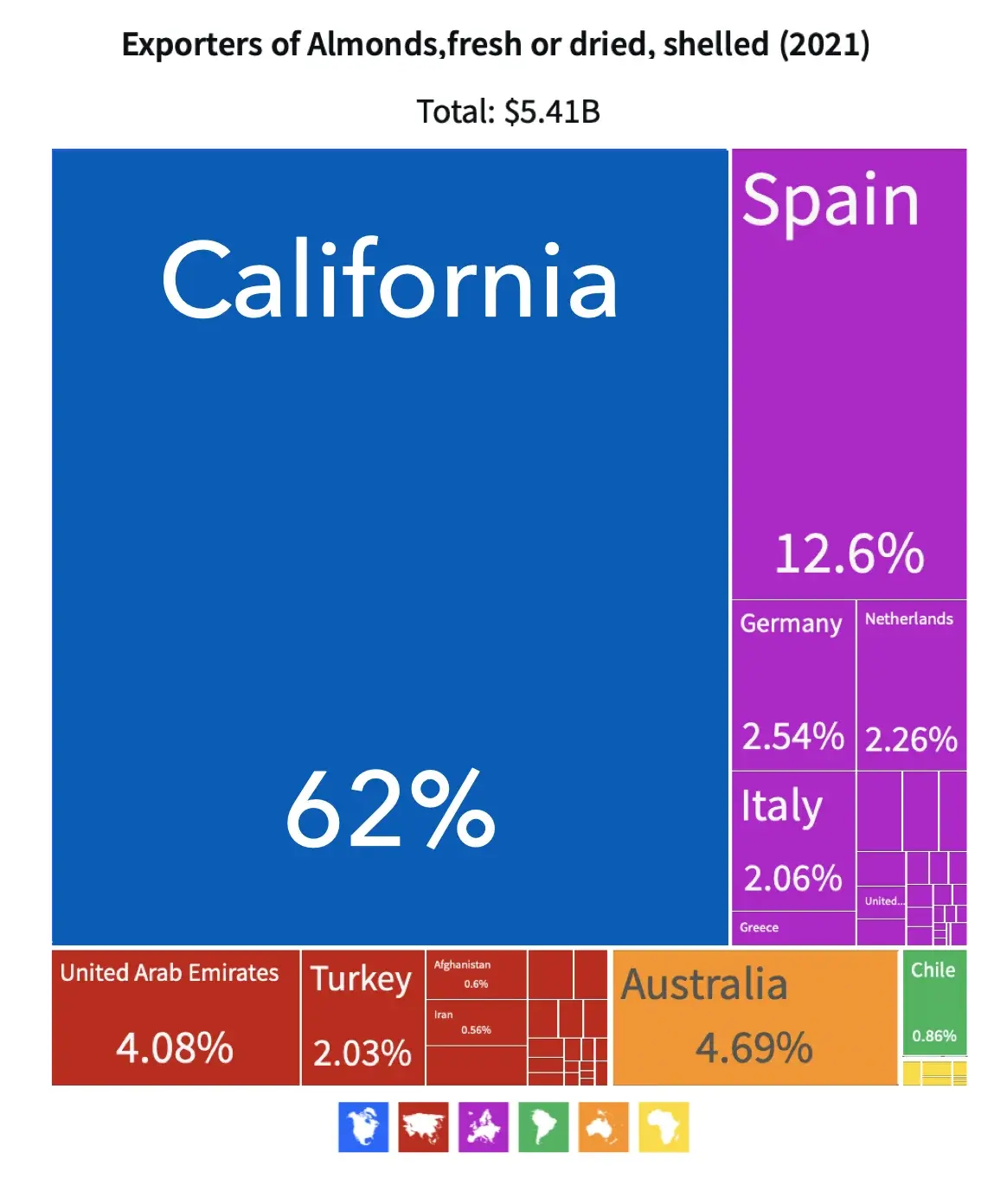
Bottled Water Industry: A Transparent Exchange
The bottled water industry stands as a testament to water's unparalleled commercial value. With trade figures reaching $4.27 billion in 2021, France, China, Italy, and Fiji have become dominant players. Yet, this industry's rise is not without consequences. In regions with limited water access, importing bottled water can strain local economies. Iraq and Palestine, for instance, saw exponential growth in their trade values in 2021, often driven by dire necessity.
The production of bottled water also contributes to plastic pollution and carbon emissions. The quest for safe and accessible drinking water comes at the cost of increased solid waste. Plastic pollution and carbon keep the clean "water genie" in its clear, inviting and manufactured bottle. As we quench our thirst, it's essential to consider both the economic and ecological implications of every sip.
In recent years, some nations have seen significant fluctuations in their water trade values. Israel, for instance, witnessed a dramatic increase, with its water trade value rising from just $153,175 to over $97 million in 2021. Similarly, Fiji's trade value expanded from $4.57 million to over $258 million. On the other end of the spectrum, regions grappling with water scarcity, saw a surge in their import values. These shifts in trade values, especially in water-scarce regions, highlight the global complexities and disparities in water demand and availability.
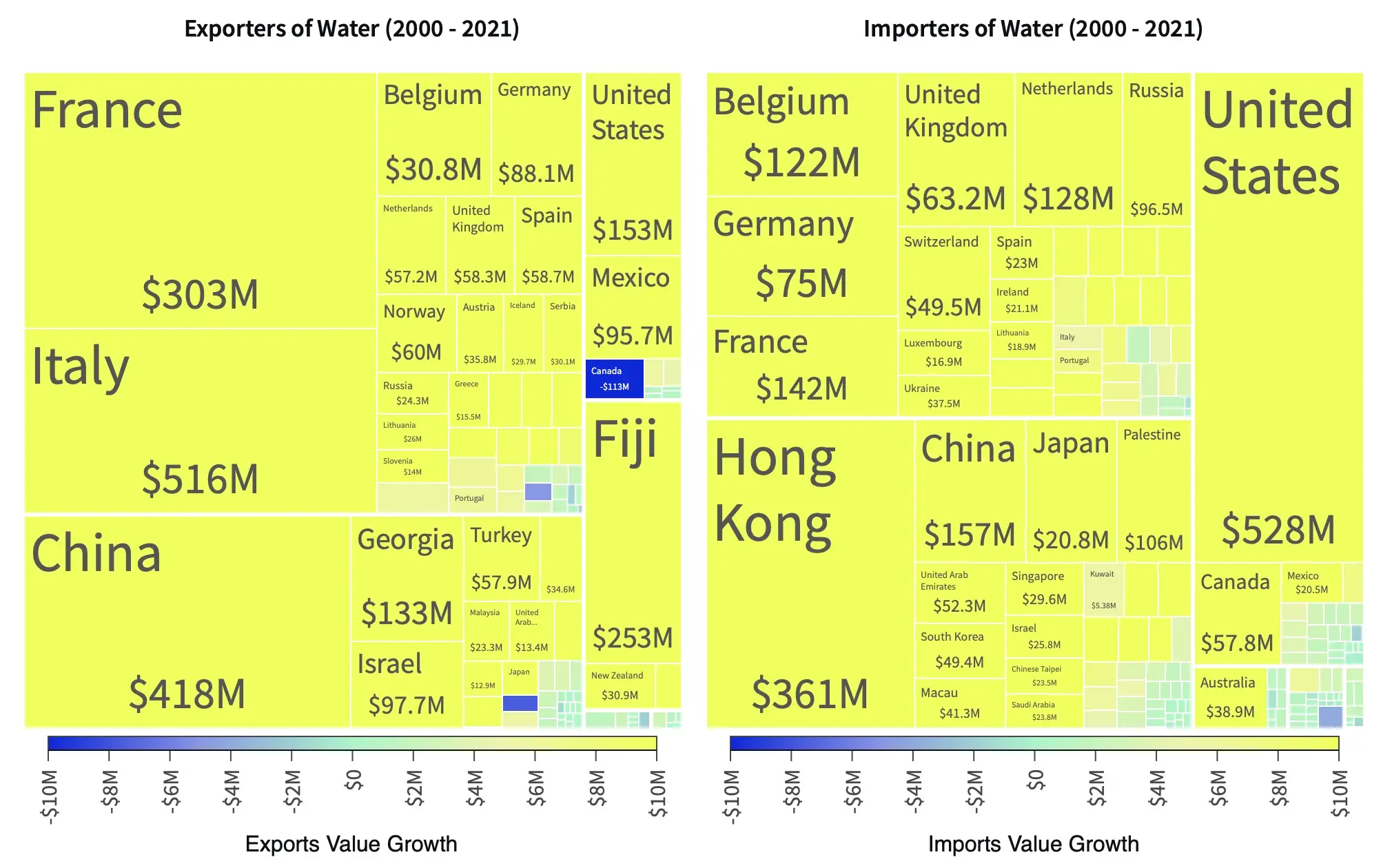
In 1798 English poet Samuel Taylor Coleridge spoke of being trapped in a boat on the ocean with only salt water. "Water water everywhere", he wrote, "nor any drop to drink." In a sense we are all trapped like Coleridge's Ancient Mariner on a planet where most of the water is undrinkable. Water, ethics and economics are converging for every citizen of every nation of this planet.
